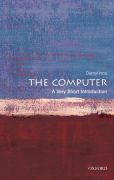
Computers form a vital part of most people's lives. But what is the nature of the computer? How does it work? What will the next generations of computers look like? Darrel Ince looks at the basic concepts behind all computers; the range of their uses, the effects of computers in the workplace, and novel formssuch as quantum computers. There is a companion web site asssociated with thebook (http://vsicomputer.wordpress.com/). It contains chapter summaries, links to relevant material and posts about items of news relevant to the book's contents. Computers have changed so much since the room-filling, bulky magnetic tape running monsters of the mid 20th century. They now form a vital part of most people's lives. And they are more ubiquitous than might be thought - you may have more than 30 computers in your home: not just the desktop and laptop but think of the television, the fridge, the microwave. But what is the basic nature of the modern computer? How does it work? How has it been possible to squeeze so much power into increasinglysmall machines? And what will the next generations of computers look like? In this Very Short Introduction, Darrel Ince looks at the basic concepts behind all computers; the changes in hardware and software that allowed computersto become so small and commonplace; the challenges produced by the computer revolution - especially whole new modes of cybercrime and security issues; the Internet and the advent of 'cloud computing'; and the promise of whole new horizons opening up with quantum computing, and even computing using DNA. INDICE: The naked computer The small computer The ubiquitous computer The global computer The insecure computer The disruptive computer The cloud computer The next computer
- ISBN: 978-0-19-958659-2
- Editorial: Oxford University
- Encuadernacion: Rústica
- Páginas: 152
- Fecha Publicación: 24/11/2011
- Nº Volúmenes: 1
- Idioma: Inglés
